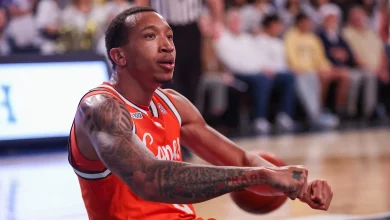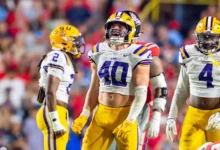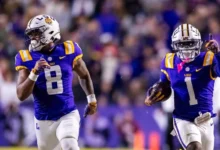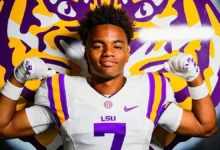This season, the Minnesota Vikings cheerleading squad includes two male cheerleaders, Blaize Shiek and Louie Conn, debuting in the preseason, reflecting a growing NFL trend toward gender-inclusive teams.
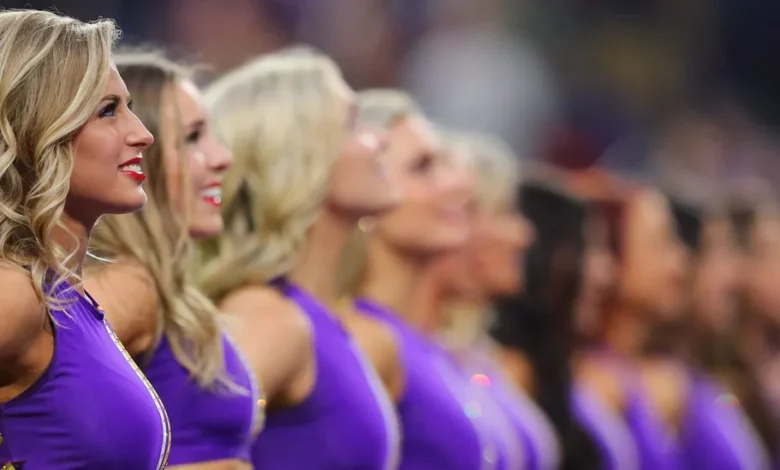
In a historic move that signals a shift in the cultural landscape of professional football, the Minnesota Vikings have officially included two male cheerleaders, Blaize Shiek and Louie Conn, in their 2024 cheerleading squad. Their debut during the preseason home opener represents more than just a change in team roster—it embodies the ongoing evolution towards gender inclusivity within the NFL and reflects broader societal trends advocating for diversity and equality.
The Significance of Inclusion in NFL Cheerleading
For decades, NFL cheerleading has been predominantly associated with female dancers, embodying traditional notions of femininity, entertainment, and team spirit. These squads have contributed significantly to the game-day atmosphere, engaging fans and embodying the franchise’s image. However, the gender dynamics within cheerleading have largely remained static, with male participation being rare and often limited to mascots or specialized roles.
The inclusion of Blaize Shiek and Louie Conn marks a pivotal point—moving from token representation or limited roles to full-fledged team members. Their participation signals that cheerleading is evolving into a more inclusive activity, emphasizing skills, enthusiasm, and leadership over gender stereotypes.
The Broader Movement Toward Gender-Inclusive Teams
The Vikings’ decision aligns with a growing movement across the NFL and other professional sports leagues to promote gender diversity. Over recent years, several teams have experimented with or fully adopted co-ed cheerleading squads. Notably, teams such as the Miami Dolphins, New Orleans Saints, and Atlanta Falcons have incorporated male cheerleaders, reflecting changing attitudes and societal expectations.
This trend is driven by multiple factors: societal advocacy for gender equality, the recognition that cheerleading involves athleticism and performance skills that are not gender-specific, and the desire to appeal to a broader, more inclusive fanbase. As sports organizations recognize that diversity enhances team culture, they are increasingly embracing co-ed squads as a way to foster inclusivity and modernize their brand image.
The Vikings’ Approach: Embracing Change
The Vikings’ inclusion of Shiek and Conn is a strategic reflection of this evolving landscape. Their debut during the preseason home opener was a milestone event, watched by fans and media alike. The team’s management and coaching staff have publicly expressed support for diversity and inclusion, emphasizing that talent, enthusiasm, and leadership are what matter most.
By integrating male cheerleaders into the squad, the Vikings are challenging traditional gender roles and showcasing that cheerleading is a sport that values athleticism, showmanship, and team spirit regardless of gender. The move also aims to resonate with younger generations who prioritize diversity and inclusivity, positioning the Vikings as a progressive and socially conscious franchise.
The Impact on Fan Perception and Community Engagement
Introducing male cheerleaders has sparked a spectrum of reactions among fans, from enthusiastic support to resistance rooted in tradition. Many supporters see it as a positive step towards equality, celebrating the Vikings’ leadership in breaking down gender barriers. These fans appreciate that the move sends a message of acceptance and encourages inclusivity within sports communities.
However, some fans have expressed skepticism or discomfort, citing concerns about tradition, team identity, or perceptions of masculinity. The Vikings’ management and public relations teams have worked to communicate the importance of diversity, emphasizing that the goal is to promote respect and equal opportunity for all.
Community engagement initiatives have also been part of the Vikings’ broader strategy, using this move as an educational opportunity to promote conversations about gender stereotypes, athleticism, and inclusion. The team’s leadership hopes that their example will inspire other organizations and young athletes to challenge gender norms and pursue their passions regardless of societal expectations.
Athleticism and Performance: Redefining Cheerleading
A key aspect of the conversation around co-ed cheerleading revolves around athleticism. Critics sometimes argue that cheerleading is primarily a display of beauty or entertainment, but modern cheerleading involves rigorous physical routines, acrobatics, dance, and teamwork—elements that are inherently athletic and not gender-specific.
Blaize Shiek and Louie Conn exemplify these qualities, demonstrating that cheerleading requires strength, agility, coordination, and stamina. Their participation underscores the notion that cheerleading, at its core, is a sport that values athletic ability over gender identity.
This redefinition of cheerleading as an athletic pursuit aligns with broader efforts within sports to highlight the physical demands and skills involved, challenging stereotypes that associate masculinity solely with certain sports or activities.
Challenges and Opportunities
While the inclusion of male cheerleaders is a positive step, it also presents challenges. Resistance from traditionalists or purists may persist, and some fans may continue to view cheerleading through a stereotypical lens. Additionally, there can be concerns about team cohesion, public perception, and media scrutiny.
However, these challenges also present opportunities. The Vikings’ pioneering role can serve as a catalyst for change in other teams and leagues. It opens pathways for more diverse participation in cheerleading and related activities, encouraging young men and women to pursue their interests without fear of judgment.
Moreover, this move enhances the NFL’s reputation as a league willing to embrace social progress. It aligns with broader initiatives promoting equality, diversity, and inclusion across all facets of the sport—from players and coaches to cheerleaders and staff.
The Future of Cheerleading in the NFL
Looking ahead, the Vikings’ example could inspire the development of fully co-ed cheerleading squads across the league. Teams might consider recruiting more male cheerleaders, creating mixed-gender routines, and promoting a culture that values diversity. Such initiatives could also include youth outreach programs aimed at encouraging participation from boys and girls alike, fostering a more inclusive environment from an early age.
The league’s ongoing evolution toward gender inclusivity may also influence public perceptions of masculinity and femininity, emphasizing that athleticism and leadership are qualities that transcend gender boundaries.
Broader Societal Implications
The Vikings’ decision is more than a sports story; it reflects societal shifts toward acceptance and equality. By showcasing male cheerleaders on a prominent platform, the NFL and the Vikings challenge stereotypes and promote a message of respect and opportunity for all.
This can have ripple effects beyond sports, influencing cultural conversations and inspiring other organizations—whether in entertainment, education, or business—to adopt more inclusive practices.
The Minnesota Vikings’ inclusion of Blaize Shiek and Louie Conn as their first male cheerleaders for the 2024 season marks a significant milestone in the ongoing journey toward gender inclusivity in sports. Their debut during the preseason home opener symbolizes a broader shift in attitudes, emphasizing that cheerleading is an athletic endeavor open to all genders.
As the NFL continues to evolve, embracing diversity and challenging traditional norms, the Vikings’ pioneering role demonstrates that progress is possible when leadership, courage, and a commitment to equality come together. This move not only enriches the team’s culture but also sets a precedent for other franchises to follow, fostering a more inclusive and dynamic future for professional sports.
Whether celebrated or debated, this development reflects society’s ongoing efforts to break down barriers and create environments where everyone can participate, excel, and be recognized for their talents—regardless of gender.



